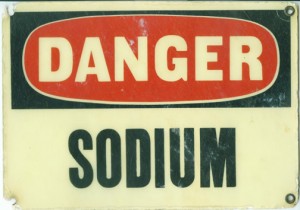By Michael Collins
LA Weekly – August 5, 1999
 Community groups have long protested defense contractor Rocketdyne’s failure to clean up toxic wastes at its Santa Susana Field Laboratory in the hills between the Simi and San Fernando valleys. But this week, it was a cleanup plan that raised hackles.
Community groups have long protested defense contractor Rocketdyne’s failure to clean up toxic wastes at its Santa Susana Field Laboratory in the hills between the Simi and San Fernando valleys. But this week, it was a cleanup plan that raised hackles.
The state Department of Toxic Substances Control (DTSC) has proposed allowing the company to excavate contaminated soil from one of the filthiest sites at the Rocketdyne’s facility, the sodium burn pit.
In the old days, Rocketdyne workers would chuck barrels of sodium into two water-filled pools and fire guns at the containers to burn off wastes (sodium mixed with water ignites spontaneously).
Left behind in the process were PCBs, dioxin, mercury, the rocket fuel oxidizer perchlorate and radioactive contagions, according to DTSC.
Rocketdyne already has removed 10,000 cubic yards of radioactive soil from the pit. The company now proposes to scrape the dirt down to the bedrock, hauling away 3,200 cubic yards of contaminated soil and replacing it with “clean” dirt topped with native vegetation.
Activists and the DTSC agree that the problem is that the bedrock is also contaminated. The issue took on new urgency after the Environmental Protection Agency in July found perchlorate in water in a Simi Valley spring four miles from Rocketdyne.
At a public forum July 28, watchdogs asked the state to test the bedrock and ensure that rain water will not carry further pollution into the groundwater table.
“Rocketdyne has a plastic tarp over it now but it wants to just dig out the contaminants and back-fill the pits without proven protection against water infiltration,” said Dr. Shel Plotkin of the Southern California Federation of Scientists. “To save a buck, they’ll allow the pits to further pollute the groundwater and put nearby residents at risk.”
Plotkin believes Rocketdyne should cap the pit with clay, compacted soil and a plastic liner to prevent seepage to groundwater.
The EPA continues to investigate the source of the perchlorate in the spring; the state could approve the cleanup plan within a month.
25 Years of Award-Winning SSFL/Rocketdyne Reporting
1998 – 2023












Recent Comments